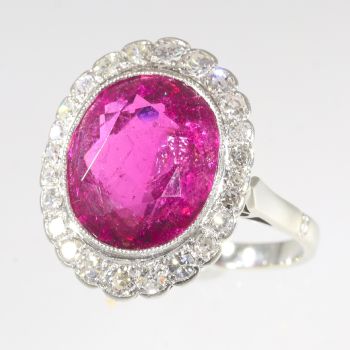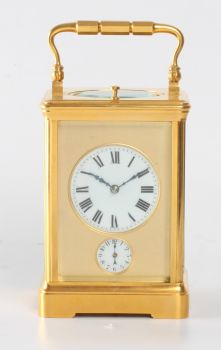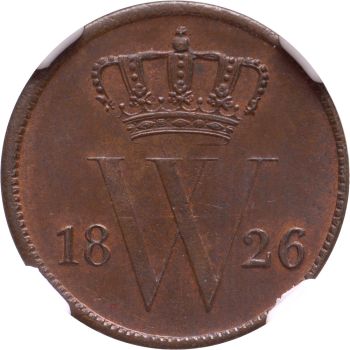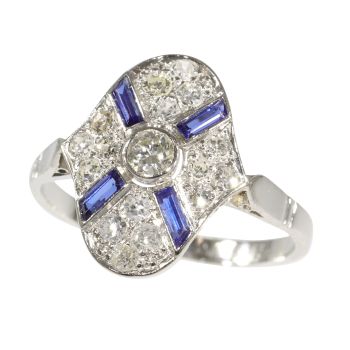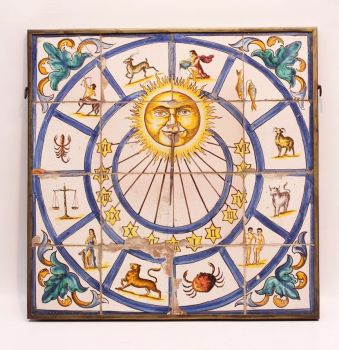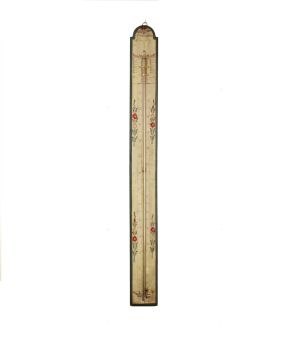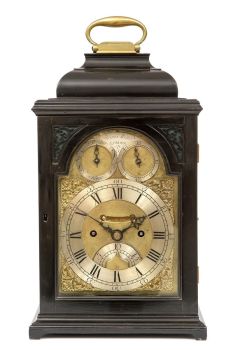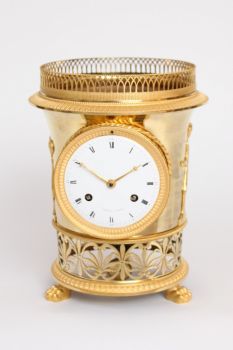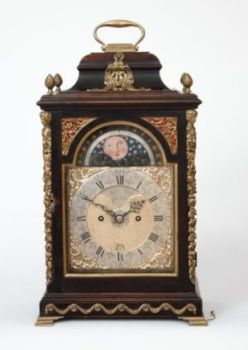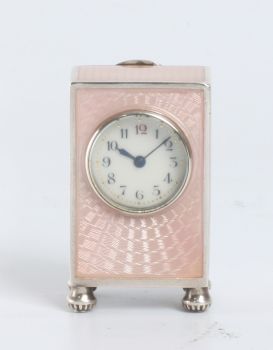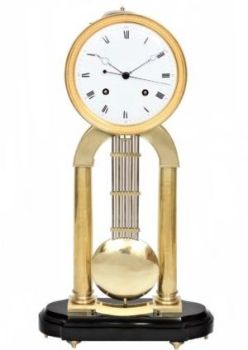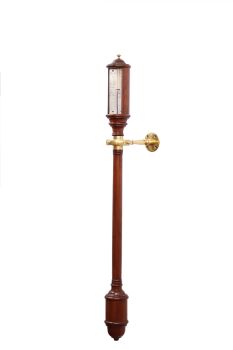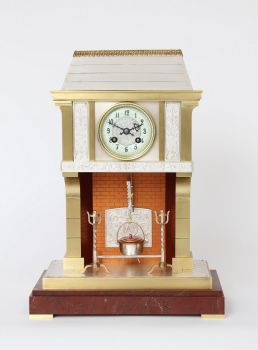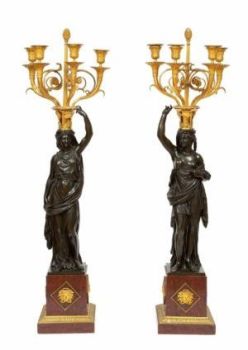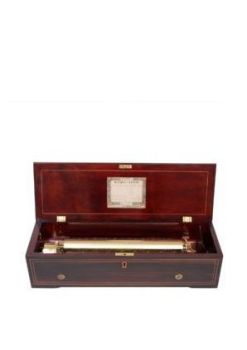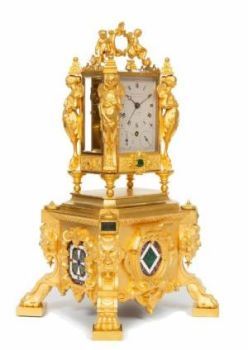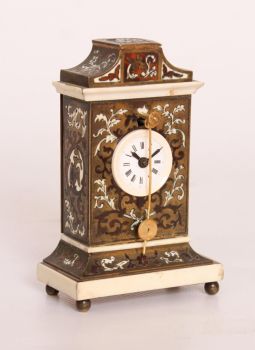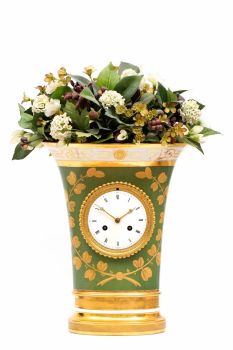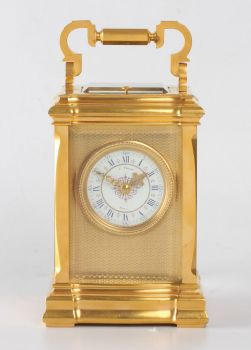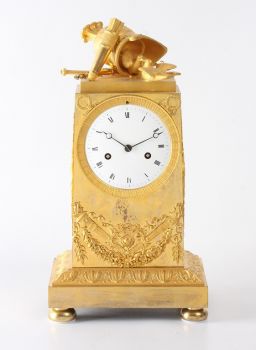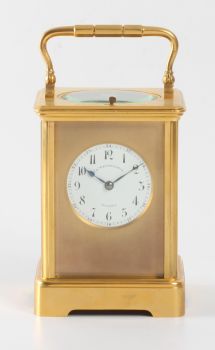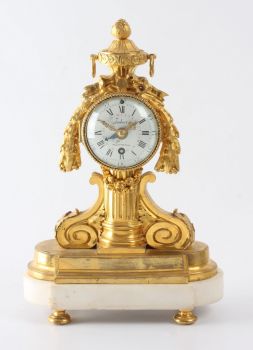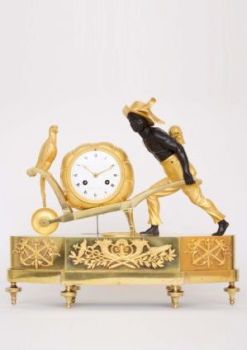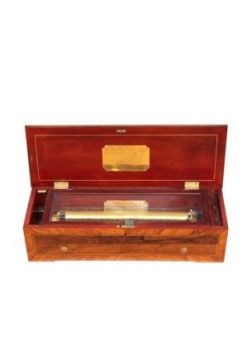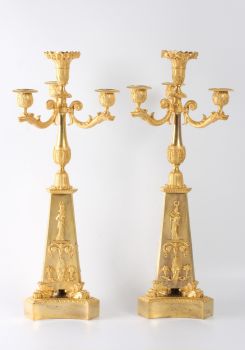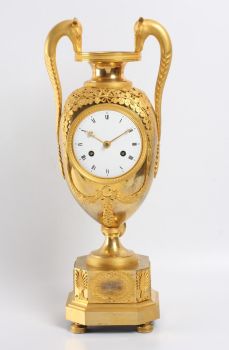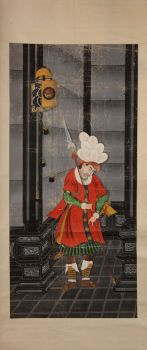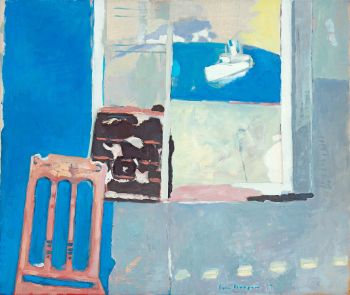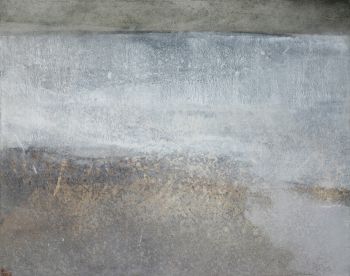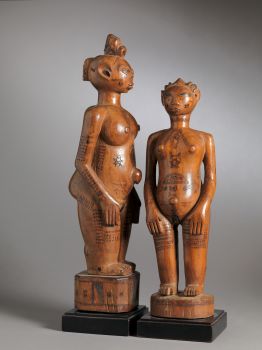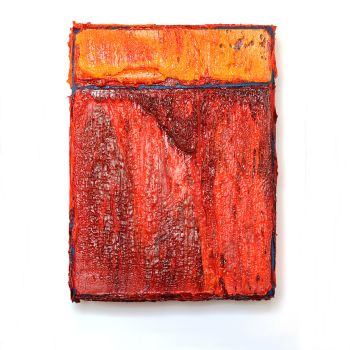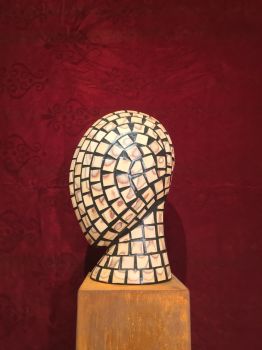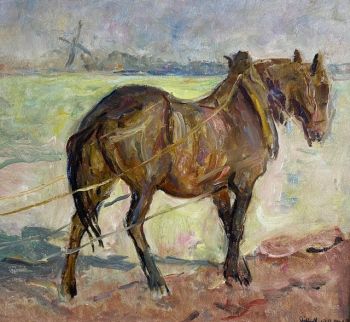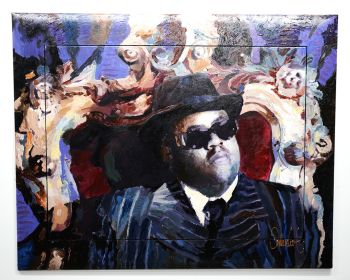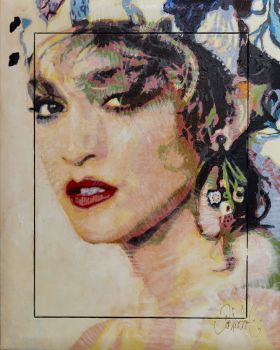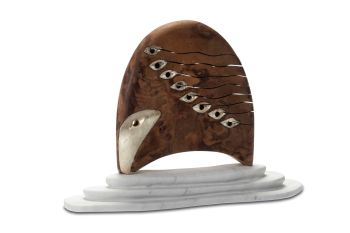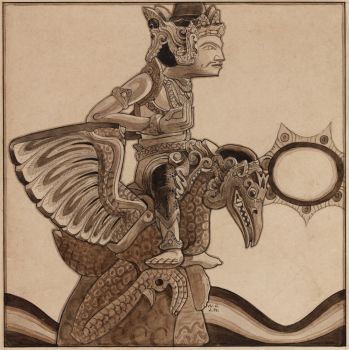A Surinam-themed Amsterdam long-case clock 1746 - 1756
Unbekannter Künstler
Holz
259 ⨯ 60 ⨯ 35 cm
Preis auf Anfrage
Zebregs & Röell - Fine Art - Antiques
- Über Kunstwerk
The Netherlands, 1746-1756, dial signed Nicolaas Weylandt/Amsterdam The case of the clock is made of Rio palissander veneer and snakewood, with the arch showing a painted scene of the harbour of Paramaribo, Fort Zeelandia and Dutch ships in anchorage, the spandrels decorated with figural representations of the four continents, the centre of the dial painted with Mercury, the god of trade, seated on a bale signed VCS (Vereenigde Compagnie Suriname), and one of the barrels bearing the initials “RBS,” on the left the river god of the Surinam river, with a Dutch three-master in the background. H. 259 x W. 60 x D. 35 cm (case) Diam. 32 cm (clock dial) This exceptionally rare long-case clock probably was ordered by one of the many wealthy families living along the Amsterdam canals that owned or had shares in plantations in Surinam. It’s a successful marriage of the work of an accomplished 18th century Amsterdam clockmaker, a Dutch cabinetmaker working with exotic tropical timbers, a woodcarver familiar with both Dutch rococo design and Surinamese iconography, and a painter with knowledge, whether first-hand or through other visualisations, of the Paramaribo waterfront. In the production of this Gesamtkunstwerk, only the name of the clockmaker is known: Nicloaas Weylandt (c. 1700 - 1754), who had a business situated on the Nieuwendijk near the Haarlemmersluis in Amsterdam from 1742 until his death. The case is made of imported timbers from Surinam; Rio-palissander and snakewood. A very similar clock-case, veneered in walnut, is illustrated in J. Zeeman, De Nederlandse staande klok, Zwolle, 1996, and dated c. 1740. That clock is also by Weylandt, so the case most likely also is by the same cabinetmaker working for Weylandt. Zeeman points out that 18th-century Dutch clockmakers relied extensively on imported clock parts, like the clock face, the various dials and clock hands, mainly from Britain. Besides, Amsterdam clockmakers outsourced the cabinetmaking, carving and painting to independent artisans. The Surinam character of the clock is evident not only in the timbers used, nor in the painted view of Paramaribo in the clock arch, but also very specific in the depiction of the parrots in the carved rococo centre block in the arch and the smaller carving in the door. Weylandt’s clock has a 7-day twin-barrel anchor movement, with a bell-strike on the hour and half-hour. It is fitted with a second dial, day aperture and alarm setting disk. Exhibited: De Grote Suriname Tentoonstelling, Nieuwe Kerk, Amsterdam, 5 October 2019 - 2 February 2020.
- Über Künstler
Es kann vorkommen, dass ein Künstler oder Hersteller unbekannt ist.
Bei einigen Werken ist nicht zu bestimmen, von wem sie hergestellt wurden, oder sie wurden von (einer Gruppe von) Handwerkern hergestellt. Beispiele sind Statuen aus der Antike, Möbel, Spiegel oder Signaturen, die nicht klar oder lesbar sind, aber auch einige Werke sind überhaupt nicht signiert.
Außerdem finden Sie folgende Beschreibung:
•"Zugeschrieben …." Ihrer Meinung nach wohl zumindest teilweise ein Werk des Künstlers
•„Atelier von ….“ oder „Werkstatt von“ Ihrer Meinung nach eine Arbeit, die im Atelier oder in der Werkstatt des Künstlers, möglicherweise unter seiner Aufsicht, ausgeführt wurde
•„Kreis von ….“ Ihrer Meinung nach ein Werk aus der Zeit des Künstlers, das seinen Einfluss zeigt, eng mit dem Künstler verbunden, aber nicht unbedingt sein Schüler
•"Art von …." oder „Anhänger von ….“ Ihrer Meinung nach eine Arbeit, die im Stil des Künstlers ausgeführt wurde, aber nicht unbedingt von einem Schüler; kann zeitgenössisch oder fast zeitgenössisch sein
•„Art von ….“ Ihrer Meinung nach ein Werk im Stil des Künstlers, aber späteren Datums
•"Nach …." Ihrer Meinung nach eine Kopie (jegliches Datums) eines Werks des Künstlers
• „Unterzeichnet …“, „Datiert …“. oder „Beschriftet“ Ihrer Meinung nach wurde das Werk vom Künstler signiert/datiert/beschriftet. Das Hinzufügen eines Fragezeichens weist auf einen Zweifel hin
• „Mit Unterschrift …“, „Mit Datum …“, „Mit Aufschrift ….“ oder „Trägt Unterschrift/Datum/Beschriftung“ ihrer Meinung nach die Unterschrift/Datum/Beschriftung von jemand anderem als dem Künstler hinzugefügt wurde
Sind Sie daran interessiert, dieses Kunstwerk zu kaufen?
Artwork details
Related artworks
- 1 - 4 / 12
Unbekannter Künstler
Een Gotische zuidelijke Nederlanden wandklok1580 - 1590
Preis auf AnfrageNico van den Assem restauratie
Unbekannter Künstler
A Dutch colonial Indonesian betel box with gold mounts1750 - 1800
Preis auf AnfrageZebregs & Röell - Fine Art - Antiques
 Kuratiert von
Kuratiert vonDanny Bree
Unbekannter Künstler
A silver spoon commemorating Juff’ Margareta van Hoorn1656 - 1694
Preis auf AnfrageZebregs & Röell - Fine Art - Antiques
Paulus Franciscus Kromjong
Blumen vor Arearea Aka (Freude) von Gauguin '20th century
Preis auf AnfrageZebregs & Röell - Fine Art - Antiques
1 - 4 / 24- 1 - 4 / 24
Unbekannter Künstler
A Dutch colonial Indonesian betel box with gold mounts1750 - 1800
Preis auf AnfrageZebregs & Röell - Fine Art - Antiques
Unbekannter Künstler
Japanese transition-style lacquer coffer 1640 - 1650
Preis auf AnfrageZebregs & Röell - Fine Art - Antiques
Unbekannter Künstler
A large Japanese Imari porcelain 'VOC Groningen' dish1800 - 1925
Preis auf AnfrageZebregs & Röell - Fine Art - Antiques
Shiba Kokan
Gemälde eines Fantasy-Holländersearly 19th
Preis auf AnfrageZebregs & Röell - Fine Art - Antiques
Unbekannter Künstler
A Dutch colonial Indonesian betel box with gold mounts1750 - 1800
Preis auf AnfrageZebregs & Röell - Fine Art - Antiques
1 - 4 / 24Unbekannter Künstler
Couple Wooden Ancestors Sculptures with Scarifications, Zela People, DRC. 1920 - 1930
Preis auf AnfrageSpectandum Gallery
1 - 4 / 24Unbekannter Künstler
An Indian part-gilt silver-clad ceremonial sceptre or mace with a tiger’s head1850 - 1900
Preis auf AnfrageZebregs & Röell - Fine Art - Antiques
 Kuratiert von
Kuratiert vonDanny Bree
Unbekannter Künstler
A silver spoon commemorating Juff’ Margareta van Hoorn1656 - 1694
Preis auf AnfrageZebregs & Röell - Fine Art - Antiques
Unbekannter Künstler
A large wall map of Asia by Nicolas de Fer 1647 - 1720
Preis auf AnfrageZebregs & Röell - Fine Art - Antiques
1 - 4 / 12















